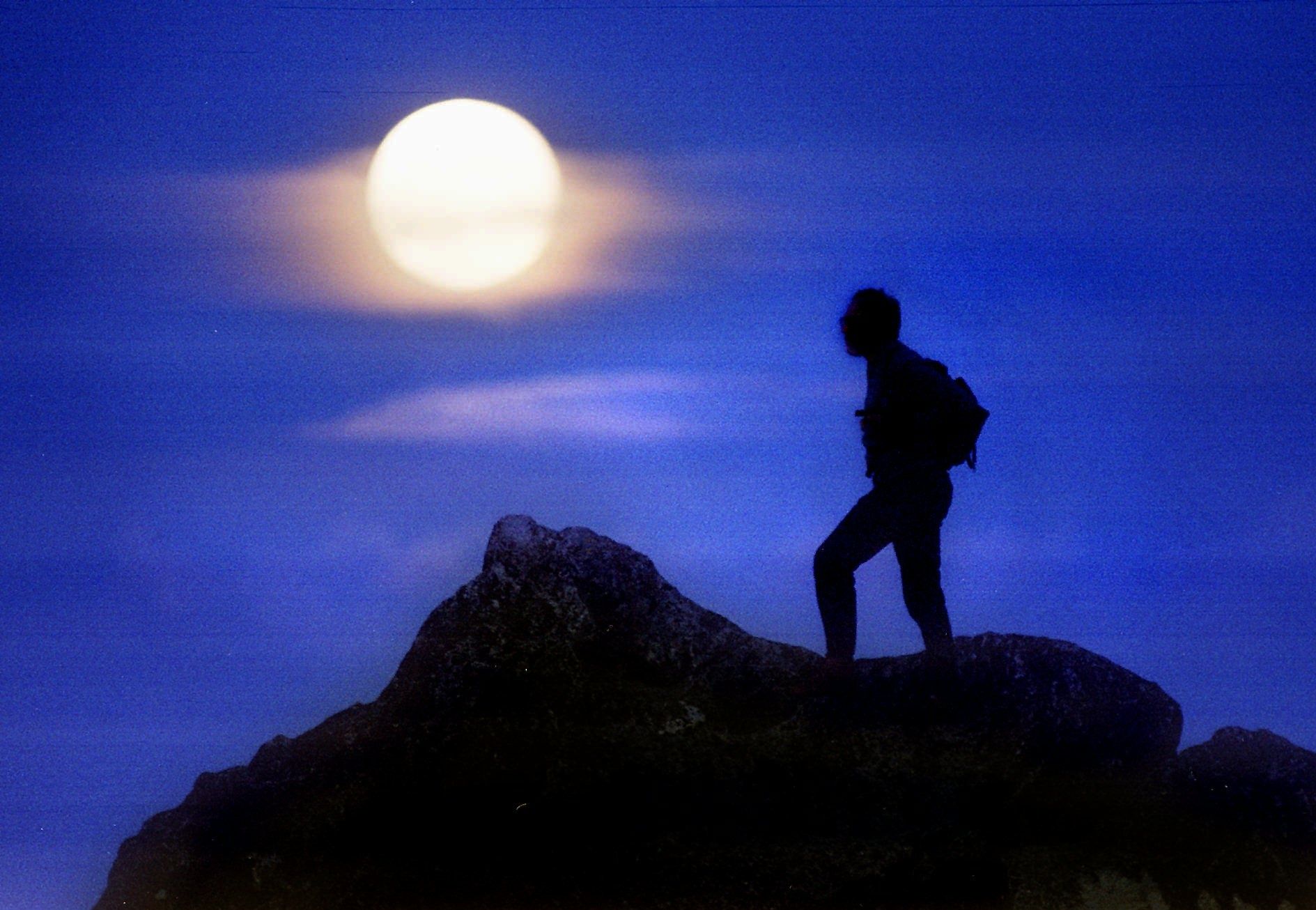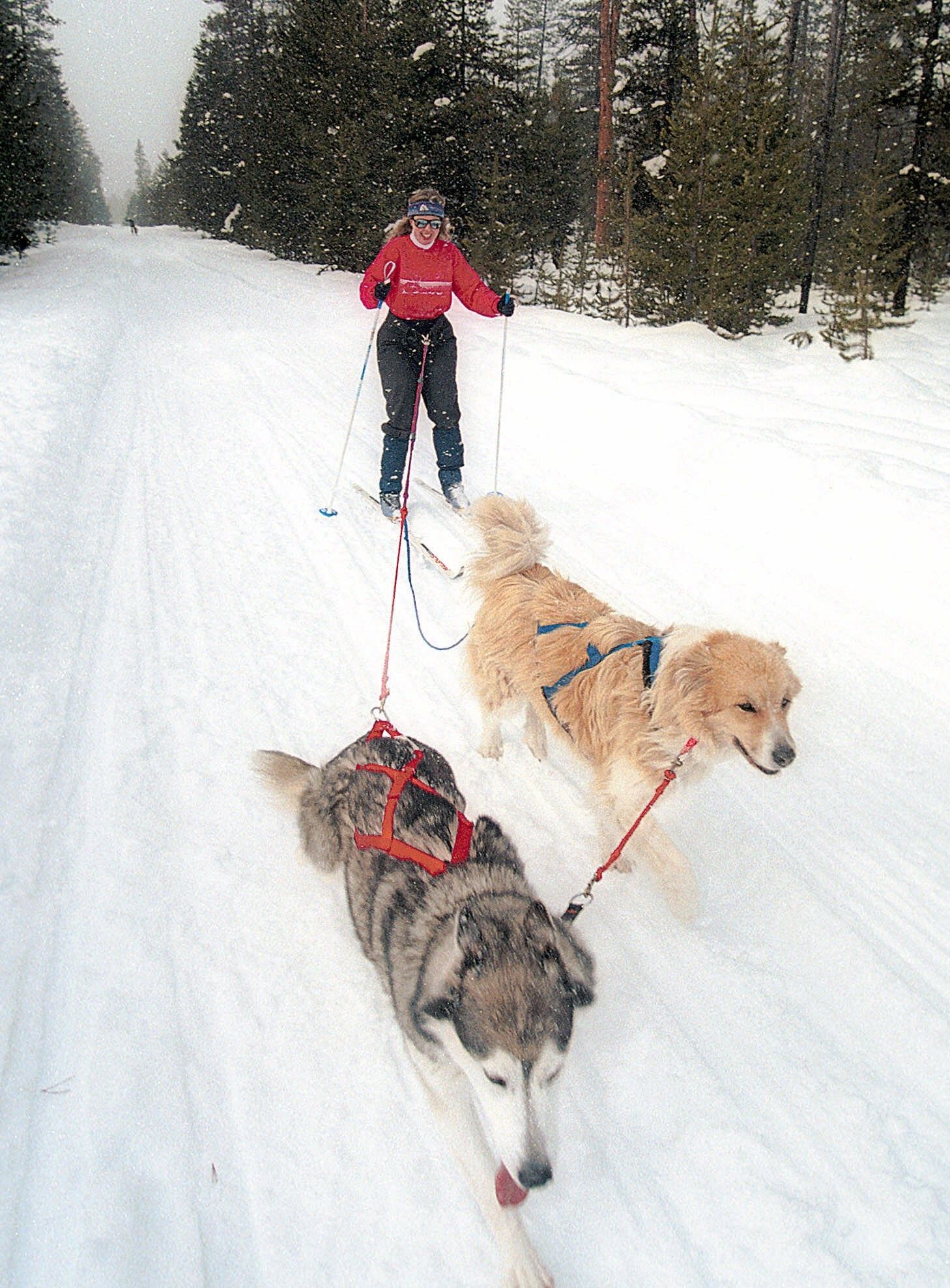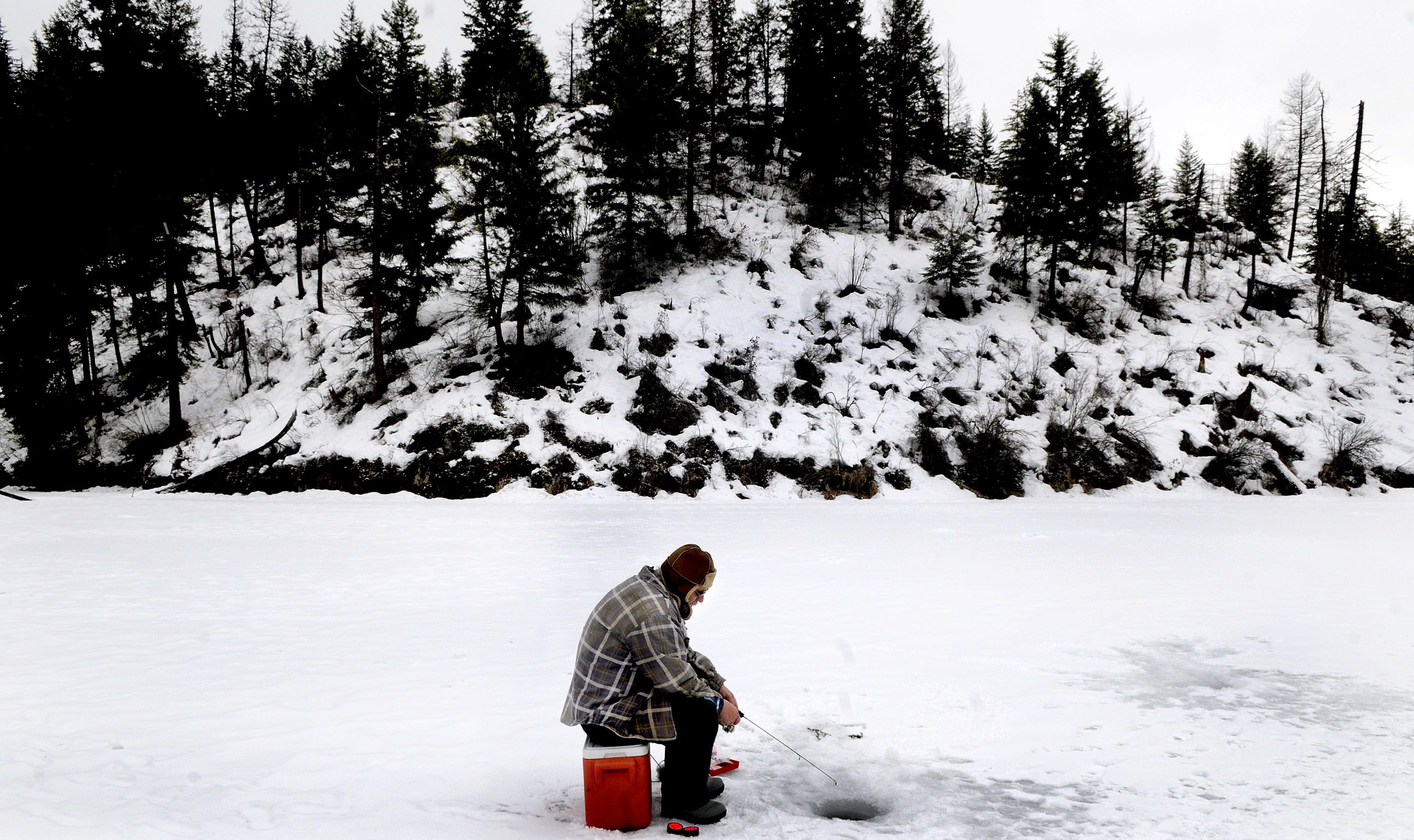Live large this winter
Take a challenge to get out and try something new
Spokane attorney Dan DeRuyter says riding his balloon-tired “fat bike” on snow makes him feel like a kid.
Although winter weather arrived early this year, the season officially begins on Saturday. So what are you going to do about it? You could join the masses that cower inside and snivel for three months or get out and embrace the coldness. We dare you to take the plunge, even if it’s something short of the annual New Year’s Day Polar Bear Plunge in Lake Coeur d’Alene (noon at Sanders Beach). The Spokesman-Review Outdoors Department suggests you challenge yourself to trying at least one new way to enjoy the snow, ice and below-freezing temperatures. You might be surprised at how quickly spring comes when winter doesn’t get you down. Following is a starter list of 15 cool outdoor winter activities to try. With planning and foresight, several could be checked off the list in a single outing. If you get hooked, you can always plan your next July vacation in, say, the Andes.
1. Do it under a full moon

Everyone can participate in this winter challenge, whether it’s a walk around the neighborhood or a full evening on skis, snowshoes or snowmobile. The Spokane Mountaineers (509-838-4974) often gather for full-moon treks to mountain tops, such as Mount Spokane. Prime local options include the Rocks of Sharon in Spokane Valley (Hike 71 in Day Hiking Eastern Washington guidebook). The trails are open enough to hike most of the way on a snowy moonlit night without need for headlamps to be on.
Dates for upcoming full moons are Tuesday, Jan. 16, Feb. 15, March 16, and April 15. Mark them on your calendar and plan a way to get out and have a howling good time.
2. Pedal a fat bike
Balloon-tired bikes – known as fat bikes – are opening doors to winter riding from sandy beaches to snow-packed trails. “It makes me feel like a kid,” said Spokane attorney Dan DeRuyter explaining why he added a fat bike to his fleet of mountain and road bikes. Big low-pressure tires offer flotation and traction on sand or packed snow and tame the roughness in undeveloped routes such as the John Wayne rail trail.
Riding the dunes near Oregon’s Cannon Beach “was a close second to a day of powder skiing,” DeRuyter said. Snowbiking on trails packed by snowshoers or snowmobile groomers keeps his cycling legs ready for the spring thaw.
Bike shops occasionally have a demo bike to try. Fat bike rental options include Schweitzer Mountain Resort (208-263-9555), which opens 3.5 miles of groomed nordic trails to snowbiking when conditions are right. Top spot is the Methow Valley, where miles of trails are open to snowbiking and Methow Cycle and Sport (509-996-3645) has a fleet of rentals.
3. Visit a hot spring
Dipping into a hot spring pool is great in spring, summer and fall, but it’s sensational in winter, when you can soak 15 minutes and emerge impervious to single-digit air temperatures while your hair instantly freezes into a helmet. A moonlight visit to a hot spring was on my honeymoon agenda, the destination for my best friend’s bachelor party and the exclamation mark at the end of many fantastic ski trips.
Snowmobilers should check out Burgdorf Hot Springs (208-636-3036) near McCall, Idaho. Several hot springs guidebooks help hikers target regional clothing-optional hot spots, such as Jerry Johnson Hot Springs near Lolo Pass.
4. Follow a critter’s track
Following a track in fresh snow is like reading a diary of what happened on the landscape before you arrive. Tracks left by snowshoe hares at Mount Spokane are particularly fascinating. Porcupine prints on BLM land in Lincoln County can always be tracked to their source. Tracking is free, although I’d highly recommend obtaining Animal Tracks by Olaus J. Murie and Mark Elbroch (Peterson Field Guides). The guidebook will help identify the species that made the tracks and give you some authority to collect on bets with your friends.
5. Go snowshoeing
If you can walk, you can snowshoe into places that are uniquely fascinating when the snow piles up. Advances in durable, lightweight and easy-to-use snowshoes have made web-footing one of the fastest-growing winter sports. Minimal skills are needed. Uphills are a cinch and downhills aren’t scary because you’re in control.
Rent snowshoes at REI (509-328-9900), Mountain Gear (509-325-9000) and Fitness Fanatics (509-922-6080) and do it yourself. Or join a group trip with Spokane Parks and Recreation’s outdoors program (509-625-6200). The Women’s Souper Bowl (Feb. 2; souperbowlspokane.org) at Mount Spokane features free snowshoe rentals, tips and group walks just for ladies.
6. Catch a whitefish
Shrug off that trout bias and catch a native specimen that’s schooled up in deep holes during winter and ready to test your skill at sensing a delicate bite. Check fishing regulations carefully for rules that allow winter whitefishing in streams where other species may be protected. Whitefish hot spots include the Little Spokane, North Fork Coeur d’Alene, Yakima and Methow rivers.
7. Join a Christmas bird count
Area Audubon Society members pave the way for newbies to try winter birding with weekly group outings. But the annual Christmas Bird Count is the social event of the season for birders. Identify common species and discover rare species passing through. The Spokane Audubon Society (509-448-3123) is leading a CBC on Dec. 29 and Coeur d’Alene Audubon (208-664-5318) has a count set for Jan. 2. Track a turkey while you’re out and check off Challenge No. 4, killing two birds with one stone, so to speak.
8. Ride a snowmobile
Thousands of miles of groomed trails through Inland Northwest forests invite seasoned snowmobilers and newbies alike to revel in the winter whiteness. The Priest Lake area is a perfect place to start because of its beauty and available services.
Rent a snowmobile – better yet, recruit a buddy or a group and rent more than one sled for backup safety – and explore some of the 400 miles of groomed trails in this niche of the Selkirk Mountains. Priest Lake Power Sports (208-443-2415) rents snowmobiles for $275 complete with helmet and snow jacket and pants if needed. When snow conditions are prime, you can ride from the store or they’ll shuttle your sled to a trailhead.
Make the trip complete with a meal or an overnight at one of the resorts (listed at priestlake.org) that cater to winter clientele.
9. Learn to skate ski
Streaking across a groomed nordic trail on skate skis may be the ultimate winter fitness sport. It combines low-impact, full-body aerobic exercise with the thrill of speed and the challenge of mastering technique. Get off on the right ski with one of the classes offered by Spokane Nordic ( spokanenordic.org), a local club that promotes nordic skiing to all age groups at the Mount Spokane Cross-Country Ski Park.
10. Harness your dog for skijoring

If you have cross-country skiing skills and a sizeable winter-ready dog you’ve got the raw ingredients for skijoring, a scaled-down version of dog sledding that eliminates the sled. You’ll need a harness, a tether and a good sense of humor. At the end of the day, your dog will be well exercised and fulfilled and that means everyone will be happy.
Spokane Parks and Recreation offers skijoring clinics almost every Sunday at the 49 Degrees North nordic ski area. Or check out Skijor Spokane (email skijorspokane@yahoo.com or see them on Facebook), a local group that promotes the sport at Mount Spokane, where certain groomed nordic trails are opened to dogs on Sunday and Wednesdays after 2 p.m. The group will conduct a skijoring clinic Jan. 19 during the WinterFest activities organized at Mount Spokane by Spokane Nordic, spokanenordic.org.
11. Ski to a backcountry cabin
The Landers family has been doing this every winter for decades and now more than ever we are reborn by muscle-powering to a place where cell phones don’t whine. A basic shelter with a wood stove and bunks can seem like a palace in the winter backcountry where wood must be split for heat and the snow’s so deep you must dig down to reach the outhouse door.
A Google search will turn up options for backcountry cabins and yurts such as in the Eagle Cap Wilderness of Oregon, Chief Joseph Pass area of Montana, the East Kooteneys of southeastern British Columbia and the Canadian Rockies.
The Rendezvous Huts system ( rendezvoushuts.com) in the Methow Valley of Okanogan County is the perfect introduction. Five wood-heated cabins equipped with padded bunks, propane stoves and lights and kitchen utensils (no plumbing) are available for rent. The cool part is that they’re scattered along the valley’s groomed ski trail system, so you don’t have to break trail. Renters must ski 5-8 miles to reach the huts, but there’s an option to have a snowmobile haul in food and gear. Book through Methow Valley Central Reservations, (800 422-3048).
12. Build a snow shelter

Even if it’s in your front yard, take advantage of a pile of snow. Shovel up a huge mound and make a snow cave if you can’t get up to the mountains where Mother Nature has done that in advance.
Better yet, find a meadow with at least 2 feet of consolidated, unblemished snow, get some pointers from a book or the Internet, buy or borrow a snow saw and make an igloo. Make the cave or igloo big enough for several people and light it up with candles. Claim extra credit for sleeping in it.
13. Fish through the ice

Start by observing experienced ice fishermen at winter lakes such as Eloika or Hog Canyon near Spokane or Fernan out of Coeur d’Alene. They’ll show you what you need. But don’t fall for the joke that you store the maggots in your mouth like a wad of chew to keep them from freezing. If no experienced ice anglers are on the ice, STAY OFF. It’s probably too thin. Ice needs to be uniformly at least 4 inches thick for safety.
If ice conditions are safe in January, Idaho Fish and Game plans to schedule a Take Me Fishing day when holes will be augured, equipment and help will be provided, and no fishing license will be required. Can’t beat that deal. Call the Panhandle Region office for scheduling and details, (208) 769-1414.
14. Teach your kid to Telemark
Backcountry skiers know the thrill of climbing slopes, ripping off the skins and dipping into graceful genuflections as they link serpentine Telemark turns in virgin snow. Passing on the age-old turning technique is mostly limited by the availability of free-heal gear for kids.
Problem solved. On Jan. 11-12, Colorado-based Ned “Tele Ned” Ryerson will bring his van full of youth gear to 49 Degrees North to conduct a clinic for kids ages 6-14. Local free-heeling parents recruited Ned last year and the results were so good they’re bringing him back for an encore. Reservations required through the resort at (509) 935-6649, ext. 610.
15. Build a fire with one match
Think you can do it in winter? There’s only one way to find out, and that’s best done before the skill is needed for survival.
Do some research first. The effort may convince you to carry fire starter in your pack. If you choose to carry cotton balls coated with petroleum jelly, the trick is to pull 6-10 tufts of jellied cotton strands out so the ball looks like a pickup piece in a game of jacks. This creates more surface area for the fire-starter flame. For motivation, reread Jack London’s “To Build a Fire.”
Outdoors Editor Rich Landers compiled list




